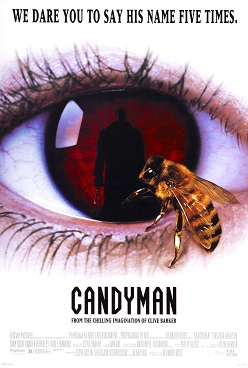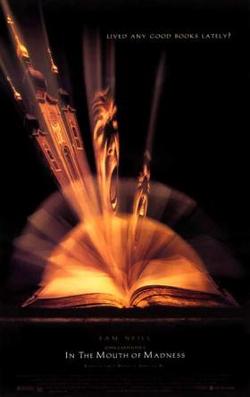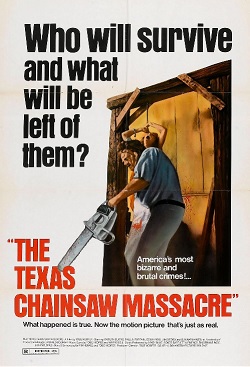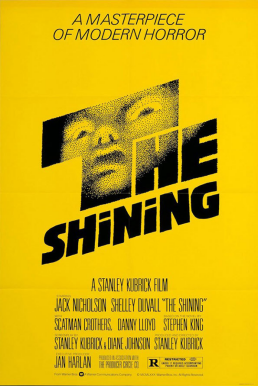
As a child nothing scared me more than “Bloody Mary.” I was only in elementary school when I heard the tale, and the “true stories” of the awful bloody things that happened to their second-cousins-brother’s friend (you know what I’m talking about) , and I promised myself I would never play the game. Even now as an adult, I respect that oath out of the fear of what could happen. After watching Bernard Rose’s supernatural-slasher, Candyman, I have one more name to add to the list of names never to utter in front of any mirror.
The story follows a pair of graduate students, Helen (Virginia Madsen) and Bernie (Kasi Lemmons) as they write their thesis on urban myths. As luck would have it, the Cabrini-Green housing project near them , has experienced a death, supposedly at the hands of the urban myth, Candyman. A murder and a community believing in that the murder was caused by a spirit? That sounds like the perfect location for students writing about urban myths and Helen quickly springs into action learning all about Candyman. Like Mary, he can be summoned by anyone who chants his name 5 times in front of a mirror. Upon being summoned he will brutally eviscerate the one who dared to summon him. Helen, being a firm non-believer, treats the rumor as a myth and proceeds through with the ritual. What follows is a tightly knit tale about gender, race, gentrification, and the mystical nature of belief.
What helps the story work is how real it feels. The community at Cabrini-Green aren’t caricatures of our worst fears of what the “hood” is. They’re heterogeneous and breathe life into a community that gets demonized, not only in the movie, but in real life as well. The shocking reality of social imbalances set in, and the way that characters react and approach different situations highlights those fears. When the cleaning ladies talk about how Ruthie Jean called the police twice about someone coming for her she gets ignored. It’s palpable and reveals just how warped the system has become. Violence becomes a self-fulfilling prophecy in a community when they’re arbitrarily relegated to the periphery for no other reason than their skin color.
Furthermore, the juxtaposition of Helen, a young white women, and Bernie, a young black women going into a black community was magnificent. They respond to different scenarios in ways to highlight not only character differences, but also social differences. When they enter the downtrodden community, Helen’s primary concern is finding information about the myth, while Bernie scared for her life. The whole way their first interaction plays out during this act only amplifies the way their positions change the way they think about themselves and what can/cannot happen to them. This becomes even more interesting when Helen goes through multiple revelations that complicate her relation to both the community and the legend of Candyman.
Speaking of Helen, Virginia’s performance is nuanced and emotionally resounding. The long reaction shots on her eyes help convey the depth of her emotional state. She goes from confident, to resourceful, to mystified, to paranoid, and so on. At no point do any of these shifts feel out of place or odd. They all feel authentic and make emotional beats in the story feel that much more poignant. After doing some background reading, I appreciated the extra effort she put in. For certain scenes, she actually let herself get hypnotized so that she would look dazed and mystified. Although, after witnessing Tony Todd’s performance as Candyman, and hearing his authoritative but hypnotic voice, I could see how someone could be entranced by him. But make no mistake, he is sinister.
The film is also shot well. The use of long pan transition shots makes the dread feel like it’s moving along. But the most interesting thing the movie does is insert stills constantly. Iconic images from the movie appear at key moments. They don’t feel intrusive, but are provocative and help foreshadow the meaning and metaphysical positions of key characters.
Rating
TLDR: Candyman, is a well-woven tale that analyzes multiple pressing social issues without ever feeling preachy or patronizing. It’s provocative and aesthetically haunting.
Final Rating: 10/10. Anyone who wants to experience a beautiful commentary on social positions/issues while also being scary, in a more visceral way should watch this movie. It’s a masterpiece.
Go to Page 2 for my spoiler-full thoughts!









